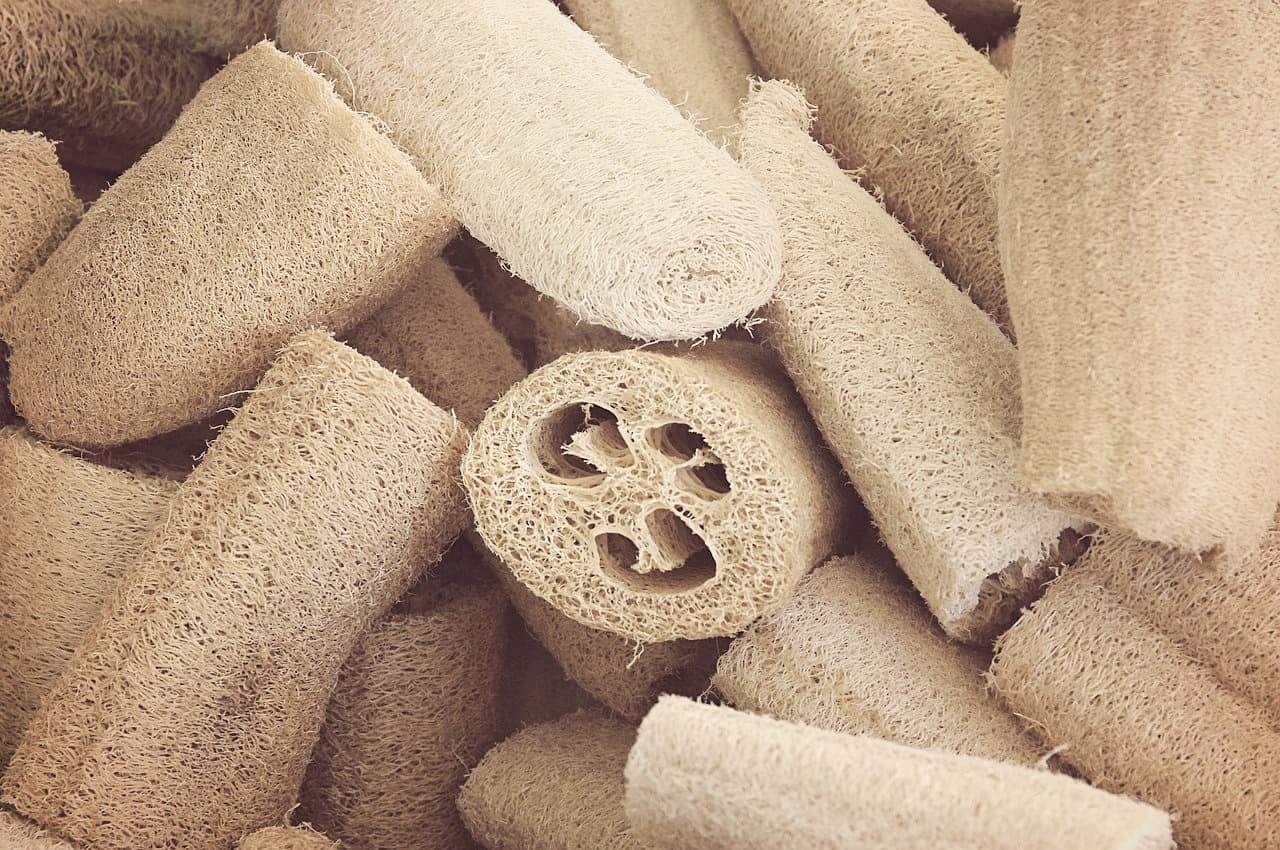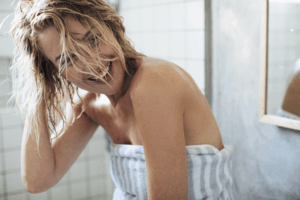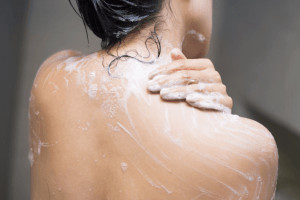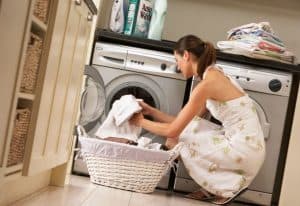3 Best Loofah Alternatives & Why You Should Try Them

Climbing into the shower after a long and stressful day can often feel like a sacred experience. For many people, the shower can be where they have some of their best ideas (#ShowerThoughts, anyone?). Not only does it leave you clean from dirt, but sometimes it leaves you feeling cleansed from the day’s hectic events, too. One of the aspects of your shower that can really intensify the cleansing experience is using the perfect loofah or body scrubber. This can create a very literal ‘washing away’ of your problems and, of course, dirt.
Despite this, recently there has been a debate on whether loofahs really are the top of the charts when it comes to getting (and staying) clean. Rumor has it that in your effort to stay clean, this product could be doing more harm than good. Now, I can hear those of you who abide by a strictly natural lifestyle raising your eyebrows in confusion. After all, loofahs come from the hands of Mother Nature herself! Let’s take a deep dive into why loofahs might not be your best option. We’ll also explore what better alternatives are available to give you your most invigorating and cleansing shower. But before we get carried away, let’s first take a closer look at what exactly is a loofah!
Washcloth Vs Loofah Explained

Understanding the differences between washcloths and loofahs will help you decide which one you should use.
Let’s clear up some of the common misconceptions surrounding washcloths vs loofahs. A loofah is a coarse and fibrous object. You can use it for washing in the same way that you would use a sponge. Loofahs are designed to be effective at exfoliating the skin and increasing circulation. The problem is that the moist shower environment and the texture of the loofah make it an ideal breeding ground for germs and bacteria. This means that there are certain care conditions that come with a loofah (that most people don’t even know about!). But we’ll get into those later.
Meanwhile, a washcloth’s purpose is to exfoliate and clean more sensitive areas of the skin, like your face. It’s also good at removing excess oil from the skin and is super absorbent. Drawbacks of a washcloth include the fact that you need to clean it regularly (you can just throw it in the washing machine). You also might need to use more soap to get that sudsy lather that’s easily achieved on a loofah. Before we break down which one is better, let’s take a closer look at what exactly a loofah is made of.
What Is A Loofah Made Of?
Let’s delve into what a loofah is made of. Loofahs are actually plants – specifically gourds. They’re also known as Luffas and refer to two different types of gourd: L. acutangular and Luffa aegyptiaca. One is rigid while the other is smooth, but both are sold as shower sponges. You can grow them in almost any warm climate, and they grow to resemble a zucchini or a cucumber. Once a loofah is harvested, it is left to dry. It is then soaked in water, peeled, and seeded. After this process, once the loofah is totally dry, you can slice it and shape it any you want to form a variety of sponges.
Many people have tried growing their own loofah plants in their gardens with great success! I’m personally a little skeptical about growing your own loofah. But that has more to do with the germs that are accumulated with every use in the shower. Let me explain how they’re used so you can see what I mean.
How To Use A Loofah?

Woman using her hands instead of a loofah to wash her body.
As mentioned earlier, you use a loofah in a similar way to how you would use any body sponge in the shower. It’s very similar to pouf shower balls, which are extremely popular because they give your body a luscious lather. That’s something that bare hands can rarely achieve. Despite its easy use, there is of course a catch. The rough holes and the moist shower mean that loofahs may be doing your skin more harm than good. Each time that you go to wash your body, all the dead skin cells from your last wash are stored on your loofah. And with them are a whole host of germs that have had time to build up. So, instead of getting clean, you might just be spreading the germs around your body!
Most dermatologists will recommend that you replace your loofah regularly to avoid the buildup of bacteria. Even if you allow your loofah to get completely dry between washes, which you should definitely be doing, you need to be replacing it every 3 to 4 weeks to avoid a germ infestation. The good news is that loofahs are eco-friendly. This means that when you throw away your old one, you can toss it in the compost instead of the trash! I guess that is a silver lining. But if I was you, I would listen up to see what your best alternatives to a loofah are.
3 Best Loofah Alternatives: What To Use Instead Of A Loofah
1. Silicone Exfoliating Brush
A silicone exfoliating brush is the ideal alternative to a loofah. This multi-purpose scrubber is designed to repel bacteria from growing. It’s made from fast-drying material, so you don’t have to worry about that moist and humid bathroom environment. What’s more is that the bristles work to exfoliate and lather your skin just as well, if not better, than a loofah. Silicone is a long-lasting material. You can wash it easily (you can just throw it in the dishwasher on a hot cycle), but it’s not the most eco-friendly material as it is not biodegradable. Although that is a heavy drawback for an eco-conscious consumer, its long lifetime might make up for it!
2. Washcloth

Washing your washcloths after every use ensures a clean shower experience.
We touched on washcloths earlier, but they need to get another mention! Washcloths might not exfoliate your skin as well as loofahs. But this quality actually makes them the perfect alternative for anyone with sensitive skin. You can find great quality washcloths that create the perfect lather to soften your skin and wash away any dirt. If you put them in the washing machine after every wash you’re sure to enjoy a hygienic shower experience every time! Top tip: get more than one so you don’t have to wait too long between washes just because you’ve not put a load of laundry in yet!
3. Antibacterial Shower Mitt
Although this is definitely a pricier option, an antibacterial shower mitt creates a deeply cleansing foamy lather. It exfoliates your skin while leaving you with that super-sudsy, clean feeling. The best part about this mitt besides for its obvious convenience is the fact that it works to actively reduce the germs on it! It has quick-dry properties that means it is naturally antifungal and antibacterial. One of my favorite aspects of this mitt is that its quick-dry technology means that it’s great for traveling with! I should add that most of these types of mitts contain abrasions that enhance their exfoliative qualities but make them too harsh for using directly on your face. That’s probably the only downside to these gloves, though!
Conclusion
I don’t know about you, but when it comes to showering, I like coming out on the other side cleaner than when I stepped into the bathtub. With this in mind, there are plenty of reasons to switch out my loofah for a less germ-infested option.
The truth is that even when you do switch out your loofah, most body-scrubbing methods need some upkeep and care. The bottom line is that when you’re washing your body, you need to keep in mind the cleanliness of the tool that you’re using, because it might not be as clean as you think. And if you think that just getting some water on it cleans it off, you’re wrong. Your loofah, washcloth, or anything else that you’re using touches some of the most intimate parts of your body. And using a germy sponge can mean that dirt gets inside rather than off of your body. It’s not pleasant to think about, but it’s important to consider next time you suds up your favorite loofah that you’ve been using since you can remember.
If you really can’t imagine a shower without your loofah, the good news is that you can continue using it if you so desire. You just need to up your cleaning routine of the loofah and keep its cleanliness and replacement in mind regularly. Place it in boiling water after every shower and replace it every 2 to 3 weeks for optimal cleanliness. If you’re using a washcloth you’ll also need to wash it at a high temperature after each use, which is why it’s ideal to purchase multiple cloths so you don’t need to put a load of laundry in after every shower. The point is that no matter the sponge you use, there needs to be some sort of upkeep to make germs stay away. The alternatives above are just some ideas to help you take your cleanest, healthiest, and most refreshing shower!

